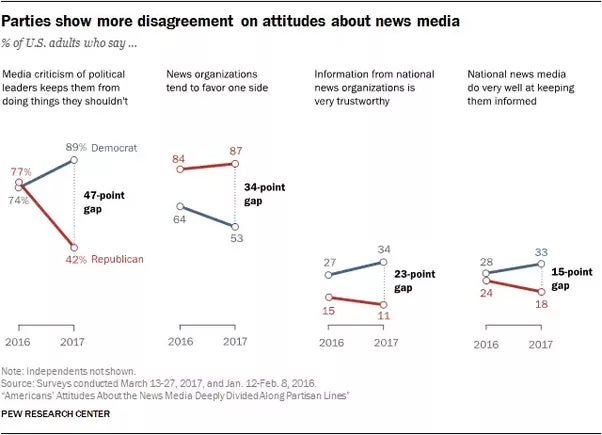This was written for April 14. Unfortunately, I couldn’t post it until now due to computer issues.
Partisanism has been a common theme in American politics for centuries. People are always taking sides on the decisions that the government made and arguing about the direction the current president and his party are leading the country. The party system can be useful and can help keep one group from starting a regime. However, it is far from perfect. One of the many major problems with a two-party system is that news sources seem to inevitably take sides.
As often as the major news networks boast about how unbiased they are, in truth, every station has an agenda. That agenda is, of course, to make money, keep up viewership, and remain employed. They need to keep their audience engaged and interested, and if they need to put the right spin on the facts to make that happen, many of them will. This is understandable as they are, in every way that counts, a business.
Unfortunately for the viewer, this means that they are receiving their information about the world through a filter, and I think a decent number of college students realize that. Although Donald Trump uses the term “Fake News” to lambast networks that disagree with him, the phrase caught on for a reason. In part, people use it against those with whom they disagree on political issues, however, the popularity of the term is also due to a concern that many share. People don’t want to be misled.
Everyone is inundated with news. It’s on our televisions, our radios, our social media, and our memes. In some ways, people are more informed than they ever have been. On the other hand, with so much news coming from so many sources, it is very difficult to confirm what is true. People realize that a lot of the information they are given is outright lies or, at least, incredibly biased. And unfortunately, when one turns to the major networks hoping to find out the facts, they are very likely to be given a one-sided answer.

In 2017, a Harvard-Harris Poll revealed some interesting results in a survey questioning people’s views on the mainstream media. They shared with The Hill, “65 percent of voters believe there is a lot of fake news in the mainstream media. That number includes 80 percent of Republicans, 60 percent of independents and 53 percent of Democrats. 84 percent of voters said it is hard to know what news to believe online.”
Out of curiosity, I searched the words CNN lies, Fox News lies, and NBC lies. Unsurprisingly, Google responded with many results. It is possible, even likely, that the majority of those webpages are created by people whose political views differ from those they are attempting to discredit, but the sheer number of results indicate that people are scared about being lied to.
I think that Dan Cohen is right, students are interested in the news. As young adults, many students are just beginning to form their own opinions on international affairs, politics, and the world, unfortunately, I’m not sure many of them know where to begin. With so many competing voices, it’s intimidating to try to find a news course that you can trust.
